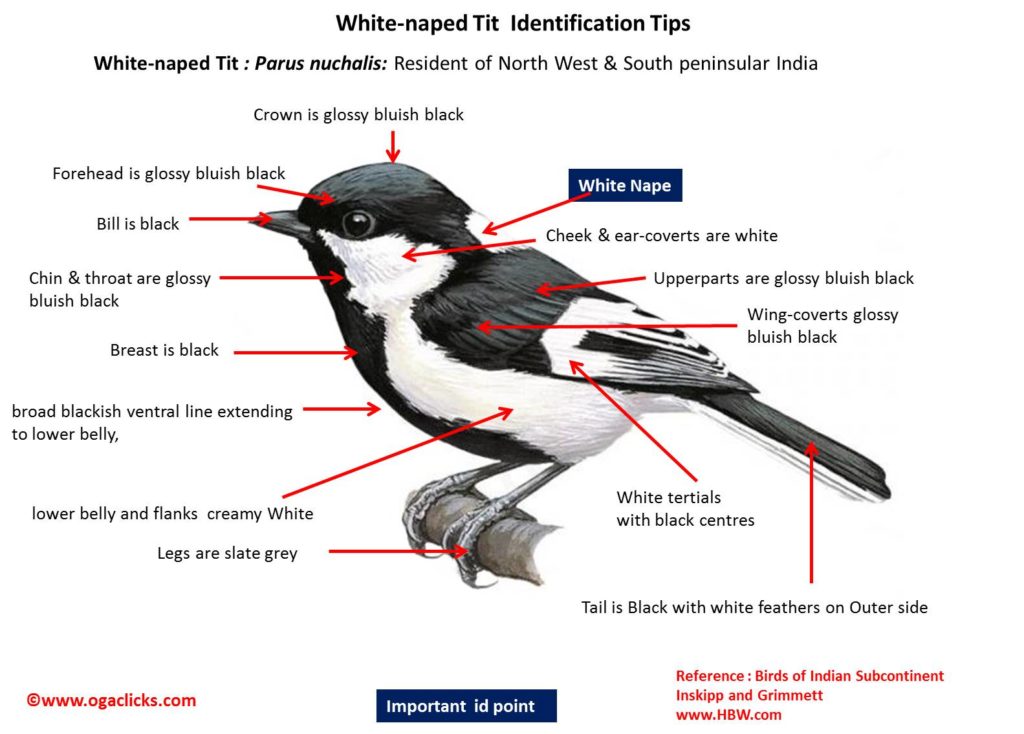White-naped Tit

White-naped Tit Parus nuchalis
Etymology:
- Parus : Latin for Tit
- Nuchalis : Latin word for the Nape
Vernacular Names: Guj: Kabariramachakli, Te: Nallapatsa jitta
Distribution in India: Resident in South and North West India.
Description: Size of 12–13 cm; weight of 13–14·5 g. It is a medium-sized, strongly patterned, pied tit. The male has glossy bluish-black on forehead and upper lores to crown, nape and most of upperparts, including all wing-coverts. It has a large or prominent white patch on lower nape and upper mantle. The central tail feathers are black, narrowly tipped white, outer two pairs are white; flight-feathers are black, but tertials are largely white. The innermost secondary is edged and tipped white, rest of secondaries are broadly white at bases, white increasing in extent onto primaries, all secondaries and primaries are tipped white. The cheek, ear-coverts and side of neck are white or creamy white. The chin, throat and breast are black or glossy bluish-black. It has a broad blackish ventral line extending to lower belly, rest of underparts are creamy, or slightly whiter on lower flanks. The axillaries and underwing-coverts are whitish; iris is dark brown; bill is black; legs are slate-grey. The female differs from male in having slightly duller and less glossy upperparts, nuchal patch is smaller, less white on tertials and bases of flight-feathers and white tips restricted to inner feathers, with cheeks and ear-coverts duller, chin yellowish-white, bib and ventral line sooty brown, rest of underparts are yellowish. The juvenile is similar to adult, but head and upperparts sooty black and lacking gloss, nuchal patch is pale creamy yellow, white on outer tail feathers are duller or washed brownish, usually lacks white tips on inner rectrices, has white tips on some greater coverts, white otherwise restricted to edges of tertials and bases of flight-feathers, only inner primaries narrowly tipped white; chin to bib and ventral line sooty brown.
Habitat: They are found in lowland dry acacia thorn-scrub in stony or hilly areas; also dry deciduous forest with scrub, and enters adjacent orchards and gardens. In India can be found at 375–920 m
Food habits: It eats small invertebrates like and larvae, and some fruit and nectar. It is found usually in pairs or in small family parties of up to five individuals. It is occasionally in mixed-species foraging flocks. It forages at all levels in trees, but mainly in canopy; also forages in shrubs and sparse undergrowth..
Breeding habits: They breed in May–Aug. the nest is a pad or platform of plant fibres and down, animal hair and wool, placed in hole in tree, frequently in old hole of woodpecker. They lay a clutch of 2-3 eggs. The chicks are fed by both parents.